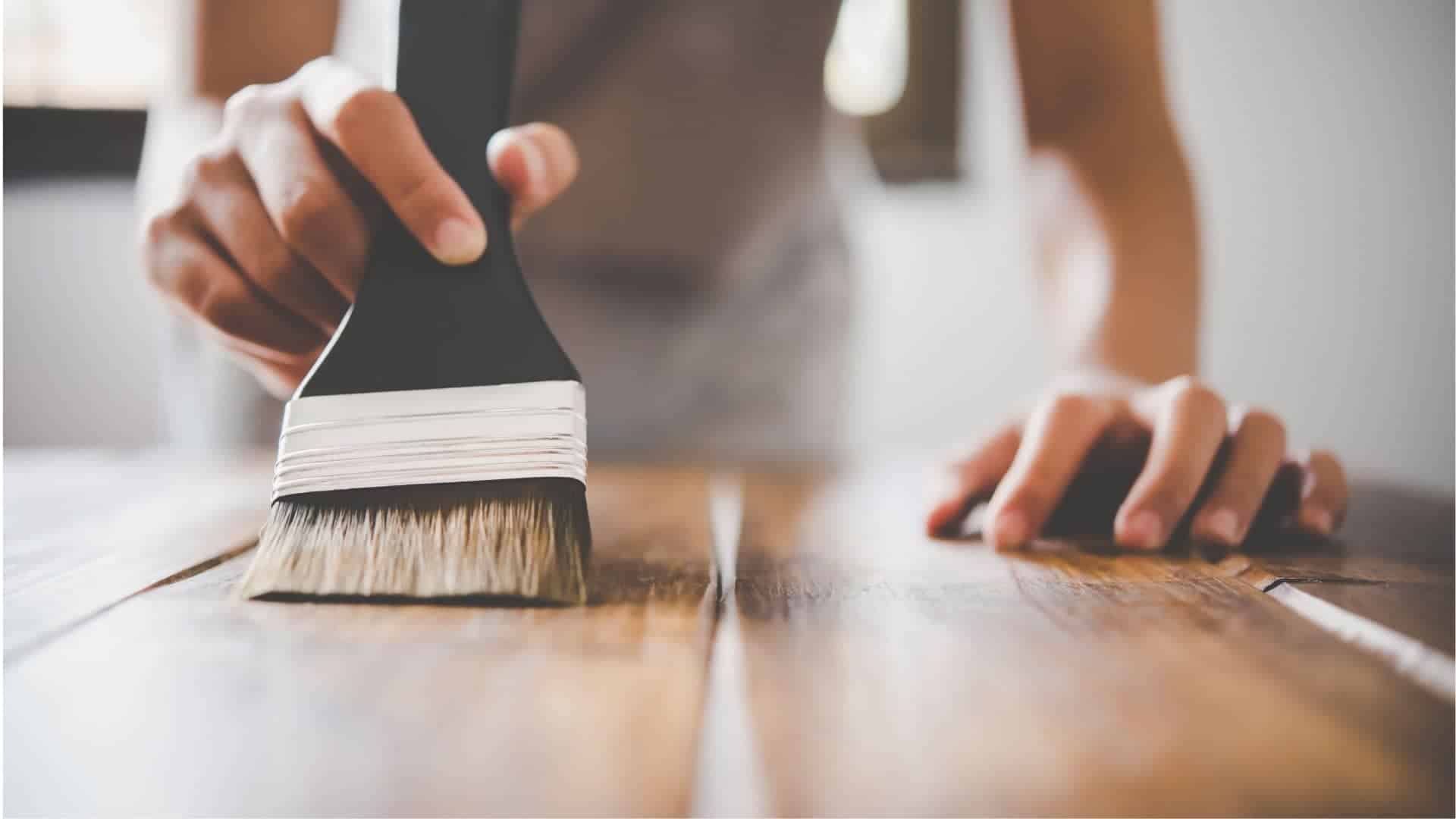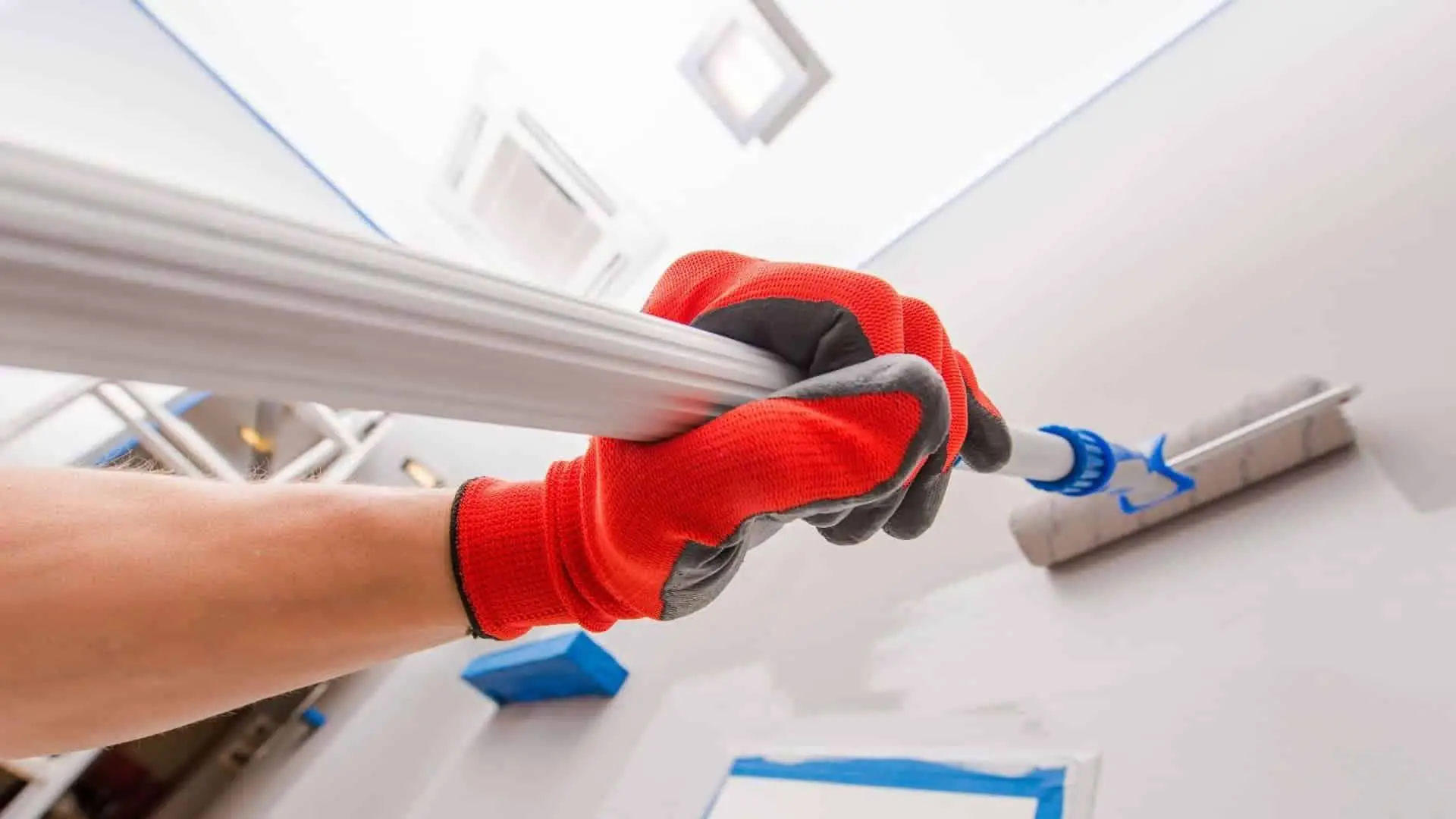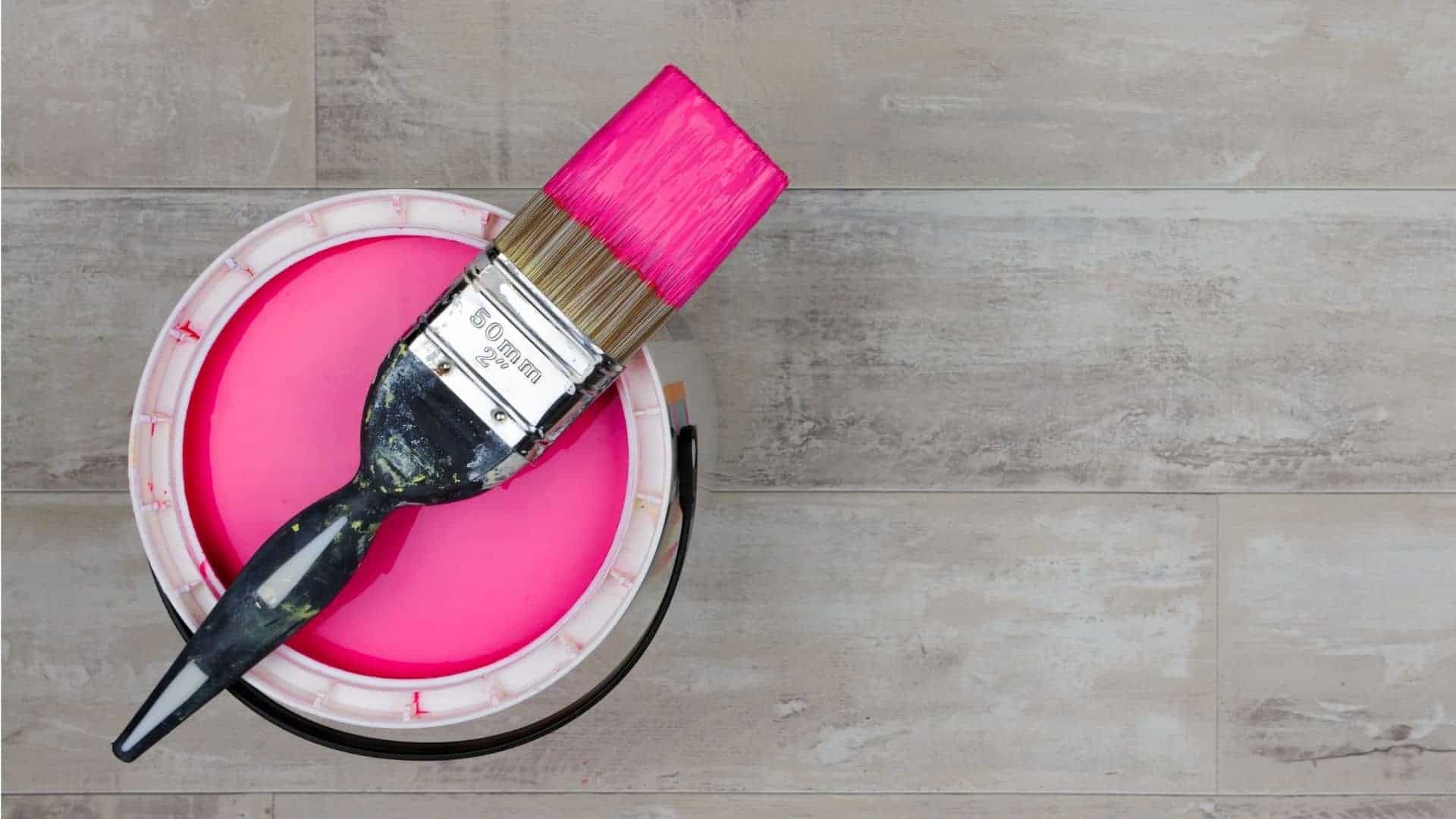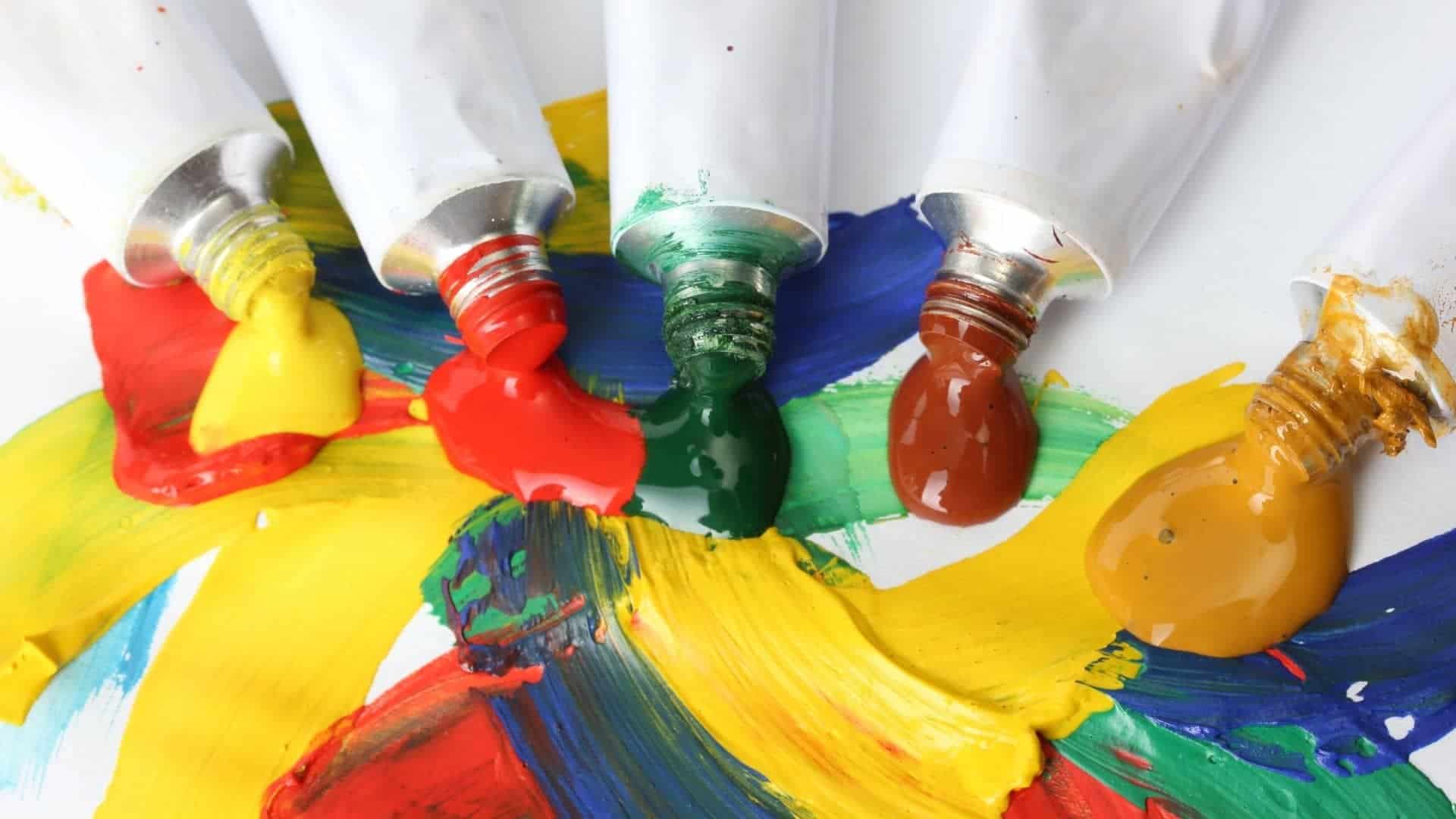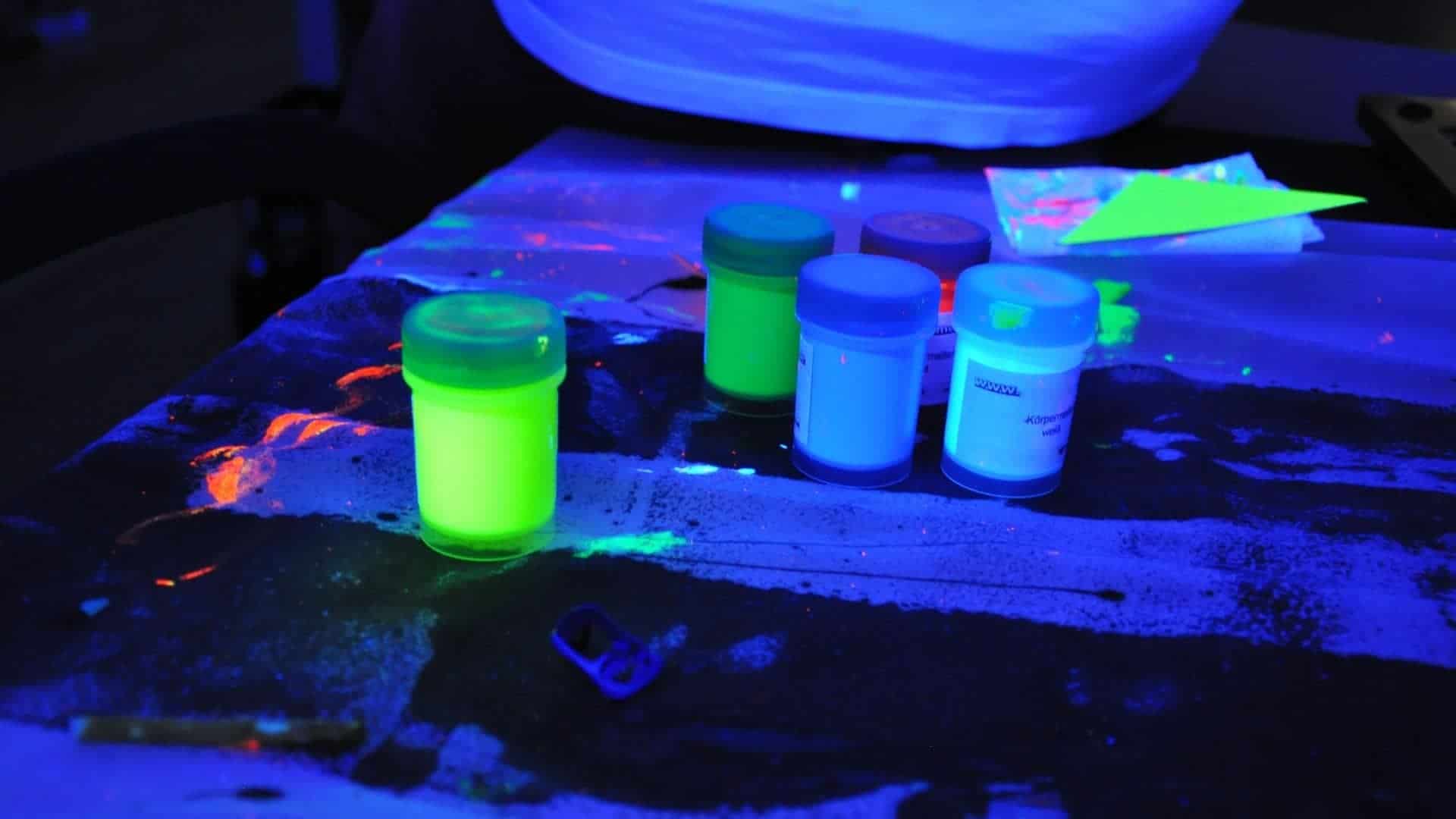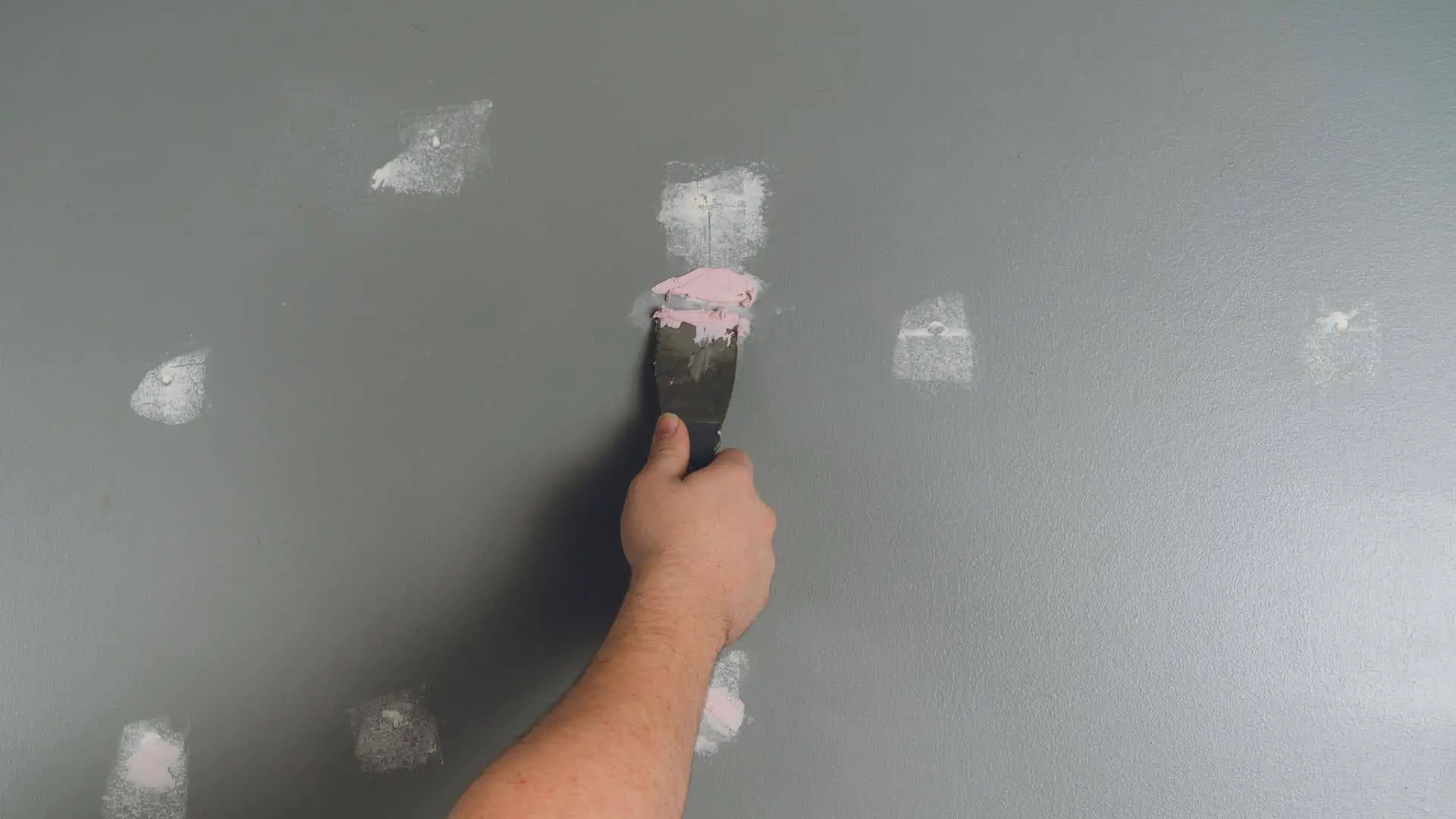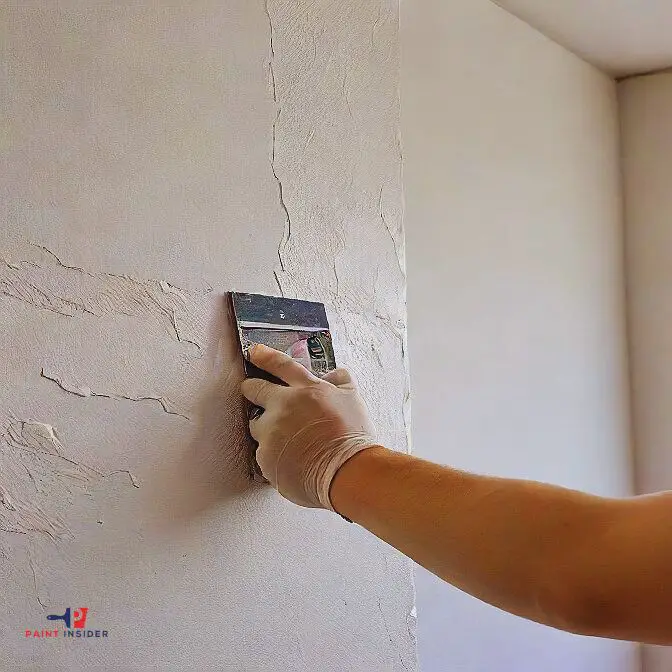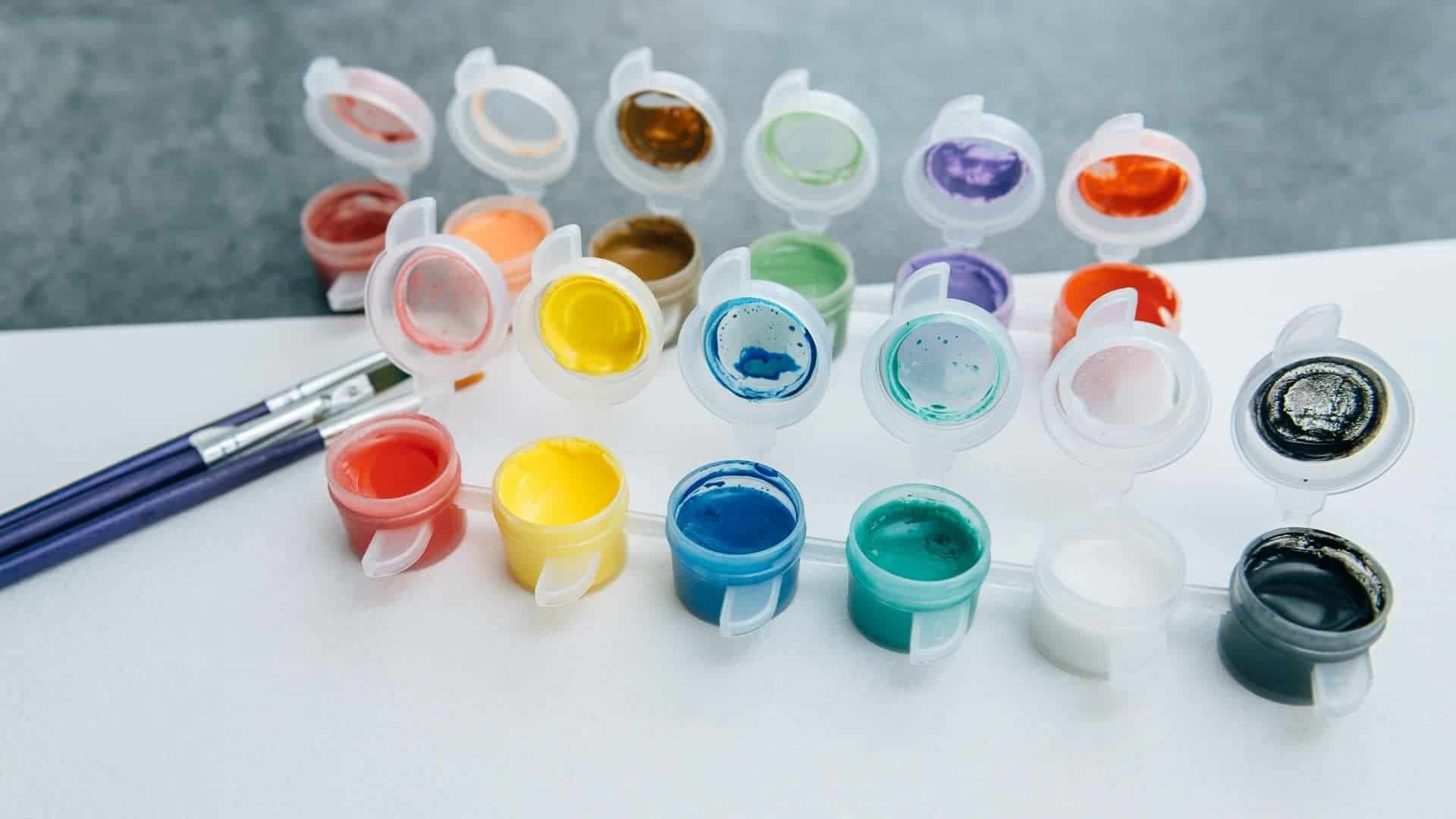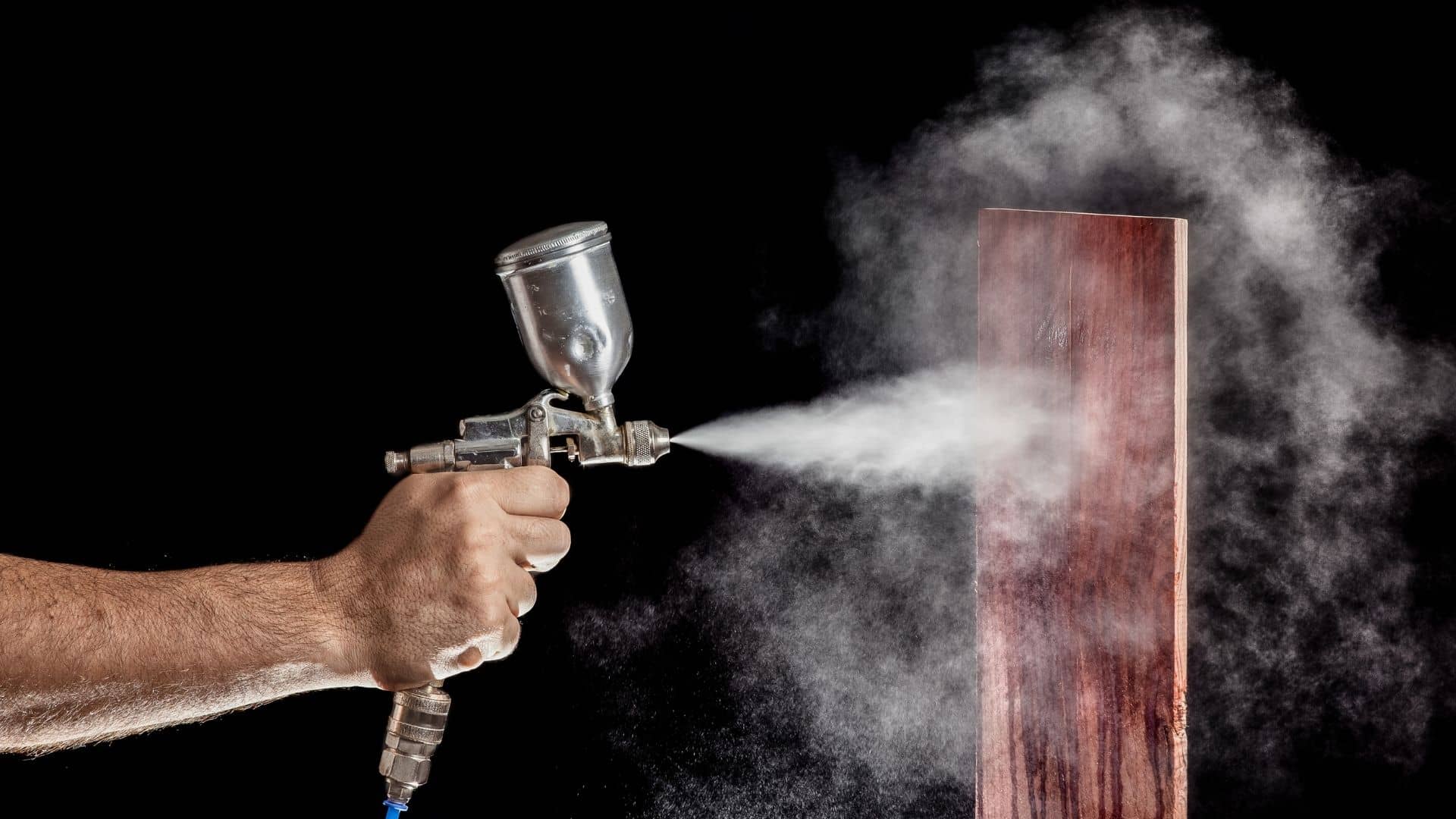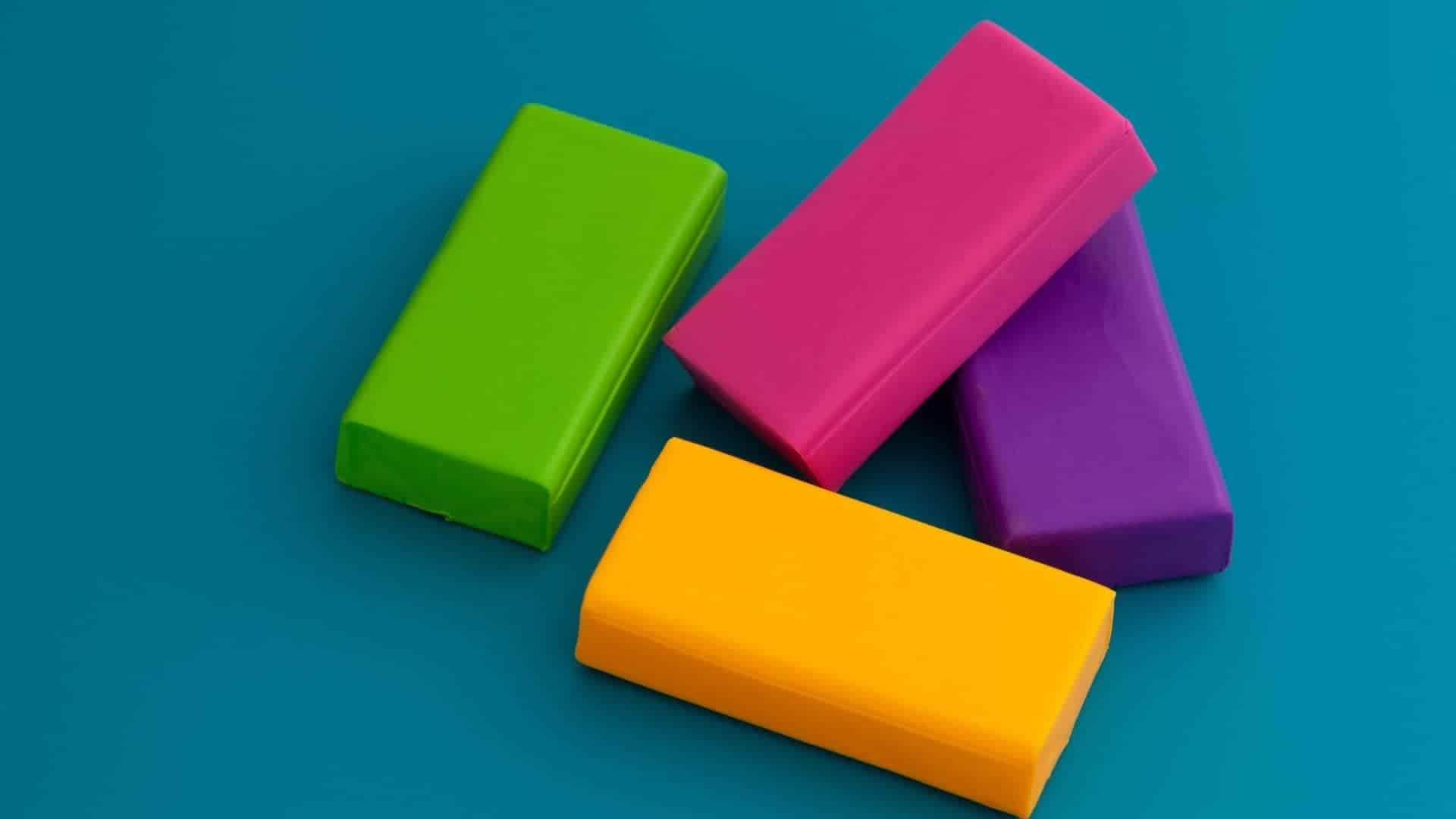Is it accurate to say that you are hoping to save time and real effort on your next painting project? Is it true that you will cover up oil-based painted surfaces? Most people spend tons of money to pay for painting services instead of undertaking to do the excise on their own. If equipped with the right DIY skills, both amateurs and professional painters can accomplish any piece of painting with much ease and save themselves tedious work.
This article will try to answer your questions reasonably feasible. Two of the essential attributes of veneer paint, which is the favored covering for inside woodwork and trim, are negligible grain infiltration and hardness.
Thus, when you paint over the finish, you need to ensure it’s holding fast well to the substrate and will not lift after you’ve covered it up. Besides, because most lacquers are reflexive, it’s critical to dull the surface to guarantee the grip of the new paint. This particularly is genuine when covering up an oil-based lacquer with a water-based one.
A layer of preliminary utilized related to appropriate cleaning and de glossing guarantees the best results. In these 3 simple advances, you can dodge the tedious, difficult work of sanding and preparing prep by utilizing Oil Bond.
Still, browsing? Let us momentarily take a gander at the three stages to save you time and energy. Won’t we?
- Wipe Oil Bond, an honor-winning paint added substance from Latex Agent, on the zone with a spotless cloth. Ensure that the nature of enamel paint on the material to minimize doing shoddy work
- Mix Oil Bond into the paint utilizing the guidelines on the container. The groundwork can be latex, however, it must be an item that is made to set up the surface and help with attachment and that says “holding” on the mark.
- Paint when the groundwork coats are dry and afterward use latex paint.No sanding, no preparing: you’re finished! To degloss, you simply splash everything over your household item, let it sit for a couple of moments, and afterward clean it off with a material or paper towels.
The original enamel paintwork entails a lot of input from the painter which in most cases is laborious and time-consuming. The stages involved are as follows:
- Preparing the surface through grinding and smoothing using sandpaper to make remove unwanted crevices on the surface
- Sanding flotsam and jetsam cleanup
- Priming
- Painting
How then can you paint over enamel paint without sanding considering the nature of work involved in traditional-based painting? To uncover your problem, it is vital to read on to find more.
How Oil Bond Works on Oil Based Surfaces?
Oil Bond is planned and defined to work taking all things together latex paint. Oil Bond is first cleaned on oil or water-based paint, stain, finish, polyurethane, or even powder-covered things with a spotless, build-up-free cloth.
Let the cleaned surface die for some time before applying the bonding substance. You will need to add accurate proportions of substances to be used to allow for the bonding oil to stick to the surface during the cleaning stage.
Any material to be added is probably imposed in the core glaze in case more of it is required during application. Oil Bond can stop minor seep through, however, if the cloth utilized for clearing the surface comes out shaded from seeping from messes or color move, at that point an impeding preliminary might be essential.
Wipe Oil Bond Directly
Oil Bond makes an incredible glue cling to oil-based painted surfaces without sanding or prime. Utilizing oil bonds is a straightforward process. After cleaning the surface to be painted using an oil bond, it leaves the surface with a velcro-like dependence on which to apply paint.
The cleaned on Oil Bond contains cleaning surfactants, de glossing specialists, and preparing, one section, self-crosslinking tars. The end product is a fine surface with little or no clevises which makes it easier to apply paint.
Blend Oil Bond Into the Paint
Presently, it’s an ideal opportunity to make the top layer of velcro-like grip utilizing Oil Bond. By adding the added substance into your paint and blending admirably, the recently improved paint will hold fast intensely to the base.
The outcome is an upgraded application that is certain to last. Your paint’s UV Rating, shading, and finish won’t be influenced by utilizing Oil Bond. It is ensured to not contrarily influence latex-based paints. Adhere to the directions on the container for best outcomes and don’t utilize different paint added substances in a similar paint.
Paint
Since you’ve utilized Oil Bond, you can skirt sanding! That implies no sanding work and no tidy-up. You’ll pass up everything of cleaning sanding flotsam and jetsam, including the inescapable trash to advance into breaks and cleft close by.
Additionally, many oil-based paints contain undeniable degrees of poisons. Especially in more seasoned homes with possibly toxic paints, Oil Bond is an amazingly helpful approach to maintain a strategic distance from destructive sanding trash flying into the air. You’ve likewise skipped preparing, saving considerably additional time, work and cash.
On account of furniture, you can skirt the sanding process. The just thing to place into thought before painting it is that you need to de gloss it first. The piece that should be painted ought to be de glossed before any painting begins to make it smooth, sparkly, semi-lustrous, and even for easy painting.
Conclusion
To accomplish a pleasant smooth completion, it’s fundamental for sand to help set up the region for painting application, by sanding you are eliminating defects, making a decent smooth completion while simultaneously adding bond by growing little, harsh edges for the paint to stick to.
As great as it sounds, sanding isn’t required at whatever point you need to do painting, particularly over finish paint. The tips featured in this article will come close by to save you time and energy doing the sanding and surface planning. Remember that this whole process can be done even by newbies.
<!– /wp:paragraph –How then can you paint over enamel paint without sanding considering the nature of work involved in traditional-based painting? ime and real effort on your next painting project? Is it true that you will cover up oil-based painted surfaces? Most people spend tons of money to pay for painting services instead of undertaking to do the excise on their own. If equipped with the right DIY skills, both amateurs and professional painters can accomplish any piece of painting with much ease and save themselves tedious work.This article will try to answer your questions reasonably feasible. Two of the essential attributes of veneer paint, which is the favored covering for inside woodwork and trim, are negligible grain infiltration and hardness.
Thus, when you paint over the finish, you need to ensure it’s holding fast well to the substrate and will not lift after you’ve covered it up. Besides, because most lacquers are reflexive, it’s critical to dull the surface to guarantee the grip of the new paint. This particularly is genuine when covering up an oil-based lacquer with a water-based one.
A layer of preliminary utilized related to appropriate cleaning and de glossing guarantees the best results. In these 3 simple advances, you can dodge the tedious, difficult work of sanding and preparing prep by utilizing Oil Bond.
Still, browsing? Let us momentarily take a gander at the three stages to save you time and energy. Won’t we?
- Wipe Oil Bond, an honor-winning paint added substance from Latex Agent, on the zone with a spotless cloth. Ensure that the nature of enamel paint on the material to minimize doing shoddy work
- Mix Oil Bond into the paint utilizing the guidelines on the container. The groundwork can be latex, however, it must be an item that is made to set up the surface and help with attachment and that says “holding” on the mark.
- Paint when the groundwork coats are dry and afterward use latex paint.No sanding, no preparing: you’re finished! To degloss, you simply splash everything over your household item, let it sit for a couple of moments, and afterward clean it off with a material or paper towels.
The original enamel paintwork entails a lot of input from the painter which in most cases is laborious and time-consuming. The stages involved are as follows:
- Preparing the surface through grinding and smoothing using sandpaper to make remove unwanted crevices on the surface
- Sanding flotsam and jetsam cleanup
- Priming
- Painting
How then can you paint over enamel paint without sanding considering the nature of work involved in traditional-based painting? To uncover your problem, it is vital to read on to find more.
How Oil Bond Works on Oil Based Surfaces?
Oil Bond is planned and defined to work taking all things together latex paint. Oil Bond is first cleaned on oil or water-based paint, stain, finish, polyurethane, or even powder-covered things with a spotless, build-up-free cloth.
Let the cleaned surface die for some time before applying the bonding substance. You will need to add accurate proportions of substances to be used to allow for the bonding oil to stick to the surface during the cleaning stage.
Any material to be added is probably imposed in the core glaze in case more of it is required during application. Oil Bond can stop minor seep through, however, if the cloth utilized for clearing the surface comes out shaded from seeping from messes or color move, at that point an impeding preliminary might be essential.
Wipe Oil Bond Directly
Oil Bond makes an incredible glue cling to oil-based painted surfaces without sanding or prime. Utilizing oil bonds is a straightforward process. After cleaning the surface to be painted using an oil bond, it leaves the surface with a velcro-like dependence on which to apply paint.
The cleaned on Oil Bond contains cleaning surfactants, de glossing specialists, and preparing, one section, self-crosslinking tars. The end product is a fine surface with little or no clevises which makes it easier to apply paint.
Blend Oil Bond Into the Paint
Presently, it’s an ideal opportunity to make the top layer of velcro-like grip utilizing Oil Bond. By adding the added substance into your paint and blending admirably, the recently improved paint will hold fast intensely to the base.
The outcome is an upgraded application that is certain to last. Your paint’s UV Rating, shading, and finish won’t be influenced by utilizing Oil Bond. It is ensured to not contrarily influence latex-based paints. Adhere to the directions on the container for best outcomes and don’t utilize different paint added substances in a similar paint.
Paint
Since you’ve utilized Oil Bond, you can skirt sanding! That implies no sanding work and no tidy-up. You’ll pass up everything of cleaning sanding flotsam and jetsam, including the inescapable trash to advance into breaks and cleft close by.
Additionally, many oil-based paints contain undeniable degrees of poisons. Especially in more seasoned homes with possibly toxic paints, Oil Bond is an amazingly helpful approach to maintain a strategic distance from destructive sanding trash flying into the air. You’ve likewise skipped preparing, saving considerably additional time, work and cash.
On account of furniture, you can skirt the sanding process. The just thing to place into thought before painting it is that you need to de gloss it first. The piece that should be painted ought to be de glossed before any painting begins to make it smooth, sparkly, semi-lustrous, and even for easy painting.
Conclusion
To accomplish a pleasant smooth completion, it’s fundamental for sand to help set up the region for painting application, by sanding you are eliminating defects, making a decent smooth completion while simultaneously adding bond by growing little, harsh edges for the paint to stick to.
As great as it sounds, sanding isn’t required at whatever point you need to do painting, particularly over finish paint. The tips featured in this article will come close by to save you time and energy doing the sanding and surface planning. Remember that this whole process can be done even by newbies.
<!– /wp:paragraph –How then can you paint over enamel paint without sanding considering the nature of work involved in traditional-based painting? ime and real effort on your next painting project? Is it true that you will cover up oil-based painted surfaces? Most people spend tons of money to pay for painting services instead of undertaking to do the excise on their own. If equipped with the right DIY skills, both amateurs and professional painters can accomplish any piece of painting with much ease and save themselves tedious work.This article will try to answer your questions reasonably feasible. Two of the essential attributes of veneer paint, which is the favored covering for inside woodwork and trim, are negligible grain infiltration and hardness.
Thus, when you paint over the finish, you need to ensure it’s holding fast well to the substrate and will not lift after you’ve covered it up. Besides, because most lacquers are reflexive, it’s critical to dull the surface to guarantee the grip of the new paint. This particularly is genuine when covering up an oil-based lacquer with a water-based one.
A layer of preliminary utilized related to appropriate cleaning and de glossing guarantees the best results. In these 3 simple advances, you can dodge the tedious, difficult work of sanding and preparing prep by utilizing Oil Bond.
Still, browsing? Let us momentarily take a gander at the three stages to save you time and energy. Won’t we?
- Wipe Oil Bond, an honor-winning paint added substance from Latex Agent, on the zone with a spotless cloth. Ensure that the nature of enamel paint on the material to minimize doing shoddy work
- Mix Oil Bond into the paint utilizing the guidelines on the container. The groundwork can be latex, however, it must be an item that is made to set up the surface and help with attachment and that says “holding” on the mark.
- Paint when the groundwork coats are dry and afterward use latex paint.No sanding, no preparing: you’re finished! To degloss, you simply splash everything over your household item, let it sit for a couple of moments, and afterward clean it off with a material or paper towels.
The original enamel paintwork entails a lot of input from the painter which in most cases is laborious and time-consuming. The stages involved are as follows:
- Preparing the surface through grinding and smoothing using sandpaper to make remove unwanted crevices on the surface
- Sanding flotsam and jetsam cleanup
- Priming
- Painting
How then can you paint over enamel paint without sanding considering the nature of work involved in traditional-based painting? To uncover your problem, it is vital to read on to find more.
How Oil Bond Works on Oil Based Surfaces?
Oil Bond is planned and defined to work taking all things together latex paint. Oil Bond is first cleaned on oil or water-based paint, stain, finish, polyurethane, or even powder-covered things with a spotless, build-up-free cloth.
Let the cleaned surface die for some time before applying the bonding substance. You will need to add accurate proportions of substances to be used to allow for the bonding oil to stick to the surface during the cleaning stage.
Any material to be added is probably imposed in the core glaze in case more of it is required during application. Oil Bond can stop minor seep through, however, if the cloth utilized for clearing the surface comes out shaded from seeping from messes or color move, at that point an impeding preliminary might be essential.
Wipe Oil Bond Directly
Oil Bond makes an incredible glue cling to oil-based painted surfaces without sanding or prime. Utilizing oil bonds is a straightforward process. After cleaning the surface to be painted using an oil bond, it leaves the surface with a velcro-like dependence on which to apply paint.
The cleaned on Oil Bond contains cleaning surfactants, de glossing specialists, and preparing, one section, self-crosslinking tars. The end product is a fine surface with little or no clevises which makes it easier to apply paint.
Blend Oil Bond Into the Paint
Presently, it’s an ideal opportunity to make the top layer of velcro-like grip utilizing Oil Bond. By adding the added substance into your paint and blending admirably, the recently improved paint will hold fast intensely to the base.
The outcome is an upgraded application that is certain to last. Your paint’s UV Rating, shading, and finish won’t be influenced by utilizing Oil Bond. It is ensured to not contrarily influence latex-based paints. Adhere to the directions on the container for best outcomes and don’t utilize different paint added substances in a similar paint.
Paint
Since you’ve utilized Oil Bond, you can skirt sanding! That implies no sanding work and no tidy-up. You’ll pass up everything of cleaning sanding flotsam and jetsam, including the inescapable trash to advance into breaks and cleft close by.
Additionally, many oil-based paints contain undeniable degrees of poisons. Especially in more seasoned homes with possibly toxic paints, Oil Bond is an amazingly helpful approach to maintain a strategic distance from destructive sanding trash flying into the air. You’ve likewise skipped preparing, saving considerably additional time, work and cash.
On account of furniture, you can skirt the sanding process. The just thing to place into thought before painting it is that you need to de gloss it first. The piece that should be painted ought to be de glossed before any painting begins to make it smooth, sparkly, semi-lustrous, and even for easy painting.
Conclusion
To accomplish a pleasant smooth completion, it’s fundamental for sand to help set up the region for painting application, by sanding you are eliminating defects, making a decent smooth completion while simultaneously adding bond by growing little, harsh edges for the paint to stick to.
As great as it sounds, sanding isn’t required at whatever point you need to do painting, particularly over finish paint. The tips featured in this article will come close by to save you time and energy doing the sanding and surface planning. Remember that this whole process can be done even by newbies.
<!– /wp:paragraph –How then can you paint over enamel paint without sanding considering the nature of work involved in traditional-based painting? ime and real effort on your next painting project? Is it true that you will cover up oil-based painted surfaces? Most people spend tons of money to pay for painting services instead of undertaking to do the excise on their own. If equipped with the right DIY skills, both amateurs and professional painters can accomplish any piece of painting with much ease and save themselves tedious work.This article will try to answer your questions reasonably feasible. Two of the essential attributes of veneer paint, which is the favored covering for inside woodwork and trim, are negligible grain infiltration and hardness.
Thus, when you paint over the finish, you need to ensure it’s holding fast well to the substrate and will not lift after you’ve covered it up. Besides, because most lacquers are reflexive, it’s critical to dull the surface to guarantee the grip of the new paint. This particularly is genuine when covering up an oil-based lacquer with a water-based one.
A layer of preliminary utilized related to appropriate cleaning and de glossing guarantees the best results. In these 3 simple advances, you can dodge the tedious, difficult work of sanding and preparing prep by utilizing Oil Bond.
Still, browsing? Let us momentarily take a gander at the three stages to save you time and energy. Won’t we?
- Wipe Oil Bond, an honor-winning paint added substance from Latex Agent, on the zone with a spotless cloth. Ensure that the nature of enamel paint on the material to minimize doing shoddy work
- Mix Oil Bond into the paint utilizing the guidelines on the container. The groundwork can be latex, however, it must be an item that is made to set up the surface and help with attachment and that says “holding” on the mark.
- Paint when the groundwork coats are dry and afterward use latex paint.No sanding, no preparing: you’re finished! To degloss, you simply splash everything over your household item, let it sit for a couple of moments, and afterward clean it off with a material or paper towels.
The original enamel paintwork entails a lot of input from the painter which in most cases is laborious and time-consuming. The stages involved are as follows:
- Preparing the surface through grinding and smoothing using sandpaper to make remove unwanted crevices on the surface
- Sanding flotsam and jetsam cleanup
- Priming
- Painting
How then can you paint over enamel paint without sanding considering the nature of work involved in traditional-based painting? To uncover your problem, it is vital to read on to find more.
How Oil Bond Works on Oil Based Surfaces?
Oil Bond is planned and defined to work taking all things together latex paint. Oil Bond is first cleaned on oil or water-based paint, stain, finish, polyurethane, or even powder-covered things with a spotless, build-up-free cloth.
Let the cleaned surface die for some time before applying the bonding substance. You will need to add accurate proportions of substances to be used to allow for the bonding oil to stick to the surface during the cleaning stage.
Any material to be added is probably imposed in the core glaze in case more of it is required during application. Oil Bond can stop minor seep through, however, if the cloth utilized for clearing the surface comes out shaded from seeping from messes or color move, at that point an impeding preliminary might be essential.
Wipe Oil Bond Directly
Oil Bond makes an incredible glue cling to oil-based painted surfaces without sanding or prime. Utilizing oil bonds is a straightforward process. After cleaning the surface to be painted using an oil bond, it leaves the surface with a velcro-like dependence on which to apply paint.
The cleaned on Oil Bond contains cleaning surfactants, de glossing specialists, and preparing, one section, self-crosslinking tars. The end product is a fine surface with little or no clevises which makes it easier to apply paint.
Blend Oil Bond Into the Paint
Presently, it’s an ideal opportunity to make the top layer of velcro-like grip utilizing Oil Bond. By adding the added substance into your paint and blending admirably, the recently improved paint will hold fast intensely to the base.
The outcome is an upgraded application that is certain to last. Your paint’s UV Rating, shading, and finish won’t be influenced by utilizing Oil Bond. It is ensured to not contrarily influence latex-based paints. Adhere to the directions on the container for best outcomes and don’t utilize different paint added substances in a similar paint.
Paint
Since you’ve utilized Oil Bond, you can skirt sanding! That implies no sanding work and no tidy-up. You’ll pass up everything of cleaning sanding flotsam and jetsam, including the inescapable trash to advance into breaks and cleft close by.
Additionally, many oil-based paints contain undeniable degrees of poisons. Especially in more seasoned homes with possibly toxic paints, Oil Bond is an amazingly helpful approach to maintain a strategic distance from destructive sanding trash flying into the air. You’ve likewise skipped preparing, saving considerably additional time, work and cash.
On account of furniture, you can skirt the sanding process. The just thing to place into thought before painting it is that you need to de gloss it first. The piece that should be painted ought to be de glossed before any painting begins to make it smooth, sparkly, semi-lustrous, and even for easy painting.
Conclusion
To accomplish a pleasant smooth completion, it’s fundamental for sand to help set up the region for painting application, by sanding you are eliminating defects, making a decent smooth completion while simultaneously adding bond by growing little, harsh edges for the paint to stick to.
As great as it sounds, sanding isn’t required at whatever point you need to do painting, particularly over finish paint. The tips featured in this article will come close by to save you time and energy doing the sanding and surface planning. Remember that this whole process can be done even by newbies.

